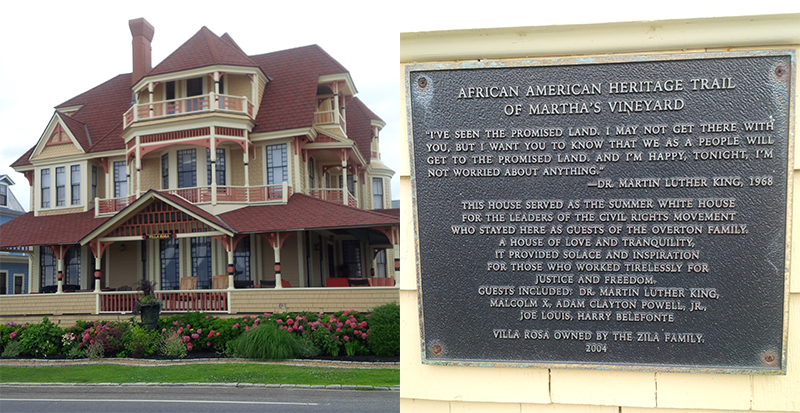Revisiting Black Martha’s Vineyard
 Last week I went with a group of friends on a day trip to Martha’s Vineyard. I have only been to the island three times in my life. Many people are surprised when I say this because I am a lifelong Bostonian, and it seems like the place every black person goes to vacation.
Last week I went with a group of friends on a day trip to Martha’s Vineyard. I have only been to the island three times in my life. Many people are surprised when I say this because I am a lifelong Bostonian, and it seems like the place every black person goes to vacation.
Most of the black people who go to the Vineyard tend to be upper-middle-class, college-educated professionals. Since I was raised in a working-class household, the Vineyard wasn’t a place my family would think of going to when I was growing up, mostly because of the cost to stay there (and still the reason I only make day trips there).
When we went on our day trip, I also went on a three-hour tour of the island. During the tour, I met with tour guide and hot sauce proprietor Gregg Wilson, or Mr. G, a longtime Vineyard resident who says he will be giving the Obamas and his traveling press pool a private tour of the island this week. In talking to him, he gave me tidbits about black Martha’s Vineyard.
The Inkwell: Contrary to common belief, the Inkwell was not given its name because it was the beach for black people. According to Mr. G, the beach got its name because of all the Harlem Renaissance writers who visited the island over the years and found literary inspiration, including Dorothy West, the author of The Wedding.
Villa Rosa: The Villa Rosa is a grand mansion (above) overlooking the Inkwell that Harlem union activist Joe Overton once owned. It is better known as the “Summer White House” because of all the famous civil rights activists who have stayed there, including Dr. King, Malcolm X, A. Philip Randolph, Harry Belafonte, and Jesse Jackson. It is believed that Dr. King found inspiration to write his “I have a dream” speech while looking out the front of the mansion and over the Inkwell.
Slavery: Slavery ended in Massachusetts in 1790. New England was the most active slave-trading area in America during the 1700s, and there were slaves on Martha’s Vineyard during that time. However, even when slavery ended, most former slaves were still limited to the jobs they were doing when enslaved, mostly in cranberry bogs and whaling.
Edgartown: While most of the island’s black history tends to center around Oak Bluffs, many black notables are from Edgartown. William Martin, the grandson of a slave, became the island’s only whaling master. Martin’s nephew also became a successful fisherman. His grandmother, Nancy Michael, or Black Nance, was like the “whaling whisperer” or “conjure woman” of Edgartown. Sailors would pay her in gifts in exchange for good luck during their voyages. Whalers that didn’t pay her were believed not to come back from their voyages alive. Another man named Daniel Webquish, who was of mixed African and Native American heritage, also became a whaling captain.
I guess you can say that William Martin led the way for future elite blacks who would come to the island. I would love to go back and learn more about this history shortly!